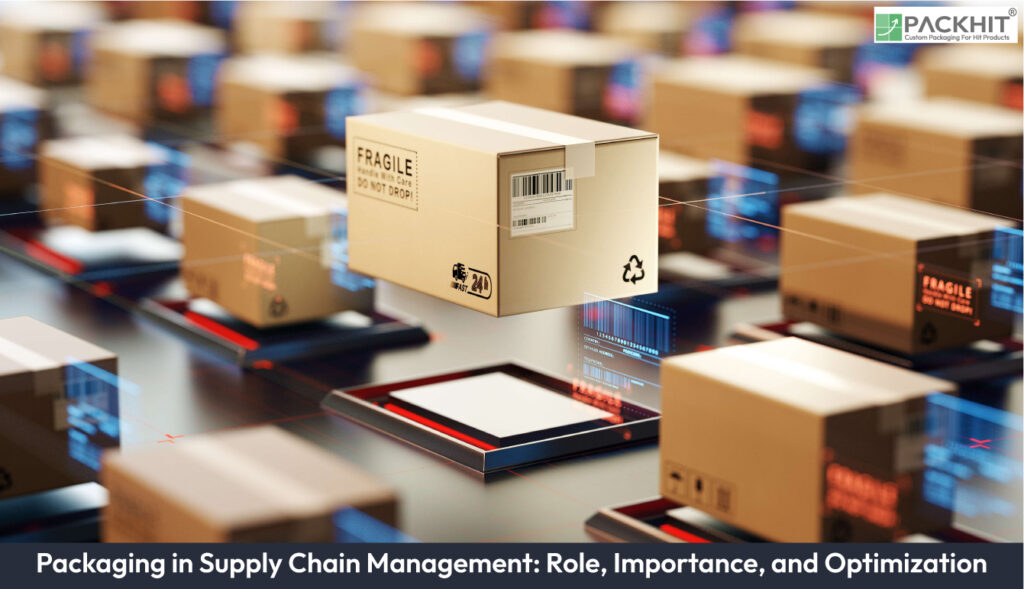Packaging serves as a critical component in supply chain management, functioning as both a protective barrier and a logistical enabler. Its role extends beyond containment, influencing transportation efficiency, inventory management, and product integrity. By optimizing packaging design, material selection, and operational integration, manufacturers can reduce costs, enhance sustainability, and improve supply chain resilience.
What is the Role of Packaging in Supply Chain Management?
Packaging in supply chain management encompasses the design, production, and application of materials that protect goods during storage, handling, and transportation. Its primary functions include safeguarding products from physical damage, contamination, and environmental factors while facilitating efficient logistics. Packaging acts as a communication medium, providing essential information such as handling instructions, product identification, and regulatory compliance details.
In the context of supply chain workflows, packaging bridges the gap between production and distribution. It ensures that products maintain their intended quality and usability from the point of origin to the end consumer. For manufacturers, particularly those utilizing custom paper-based packaging, the role of packaging extends to branding, sustainability, and cost management.
Core Functions of Packaging in Supply Chains
- Protection: Prevents damage from mechanical shocks, vibrations, and environmental exposure.
- Containment: Ensures products are securely held together for efficient handling and storage.
- Communication: Displays critical information such as barcodes, batch numbers, and compliance labels.
- Facilitation: Simplifies transportation and inventory management through stackable and modular designs.
Why is Packaging Important in Supply Chain Management?
The importance of packaging in supply chain management lies in its ability to influence operational efficiency, cost structures, and customer satisfaction. Properly designed packaging minimizes waste, reduces transportation costs, and ensures compliance with regulatory standards. For manufacturers, it also serves as a tool for differentiation, enabling the use of sustainable materials and innovative designs to align with market demands.
Impact on Transportation and Logistics
Packaging directly affects transportation efficiency by optimizing space utilization and reducing the weight of shipments. Lightweight, durable materials such as corrugated paperboard are commonly used to lower fuel consumption and shipping costs. Additionally, modular packaging designs facilitate palletization, improving loading and unloading times while minimizing the risk of damage during transit.
Role in Inventory Management
In inventory management, packaging contributes to streamlined storage and retrieval processes. Standardized packaging dimensions enable efficient stacking and reduce the need for excessive warehouse space. Furthermore, clear labeling and barcoding on packaging improve inventory tracking accuracy, reducing errors and enhancing supply chain visibility.
How Can Packaging Be Optimized for Supply Chain Efficiency?
Optimizing packaging for supply chain efficiency involves balancing protection, cost, and sustainability. Manufacturers can achieve this by adopting advanced design techniques, selecting appropriate materials, and integrating packaging processes with supply chain operations. Below are key strategies for optimization:
Material Selection and Design
Choosing the right materials is critical for achieving cost-effective and sustainable packaging solutions. For paper-based packaging, options such as recycled cardboard and biodegradable coatings offer environmental benefits without compromising durability. Design considerations, including structural integrity and weight distribution, further enhance packaging performance during transportation and storage.
Sustainability Initiatives
Sustainable packaging practices, such as reducing material usage and incorporating renewable resources, align with global environmental goals. Manufacturers can implement closed-loop systems, where packaging materials are recovered and reused, to minimize waste and lower production costs. Additionally, lightweight designs reduce carbon emissions associated with transportation.
Integration with Supply Chain Technology
Integrating packaging with supply chain technologies, such as automated warehousing systems and IoT-enabled tracking, enhances operational efficiency. Smart packaging solutions equipped with sensors can monitor temperature, humidity, and handling conditions, ensuring product quality throughout the supply chain. These innovations also provide real-time data for predictive analytics and decision-making.
What are the Challenges in Packaging Supply Chains?
Despite its benefits, packaging in supply chain management faces several challenges, including cost pressures, material shortages, and regulatory compliance. Manufacturers must navigate these issues while maintaining product quality and operational efficiency.
Cost Management
Rising raw material costs and fluctuating demand can strain packaging budgets. To mitigate these challenges, manufacturers can explore alternative materials, negotiate supplier contracts, and invest in scalable production technologies.
Regulatory Compliance
Packaging must adhere to various regulations, including those related to labeling, safety, and environmental impact. Non-compliance can result in fines, product recalls, and reputational damage. Manufacturers should stay informed about evolving standards and implement robust quality control measures to ensure compliance.
Future Trends in Packaging for Supply Chain Management
Emerging trends in packaging are reshaping supply chain management, with a focus on sustainability, digitalization, and customization. Smart packaging technologies, such as RFID tags and QR codes, are enhancing traceability and consumer engagement. Meanwhile, advancements in material science are enabling the development of lightweight, high-strength packaging solutions that reduce environmental impact.
For manufacturers, staying ahead of these trends requires continuous innovation and collaboration with supply chain partners. By leveraging these advancements, businesses can achieve greater efficiency, cost savings, and customer satisfaction.

